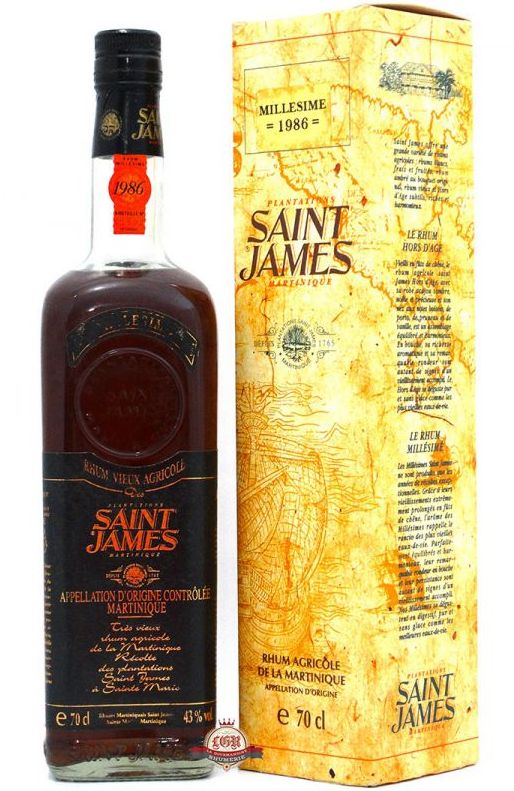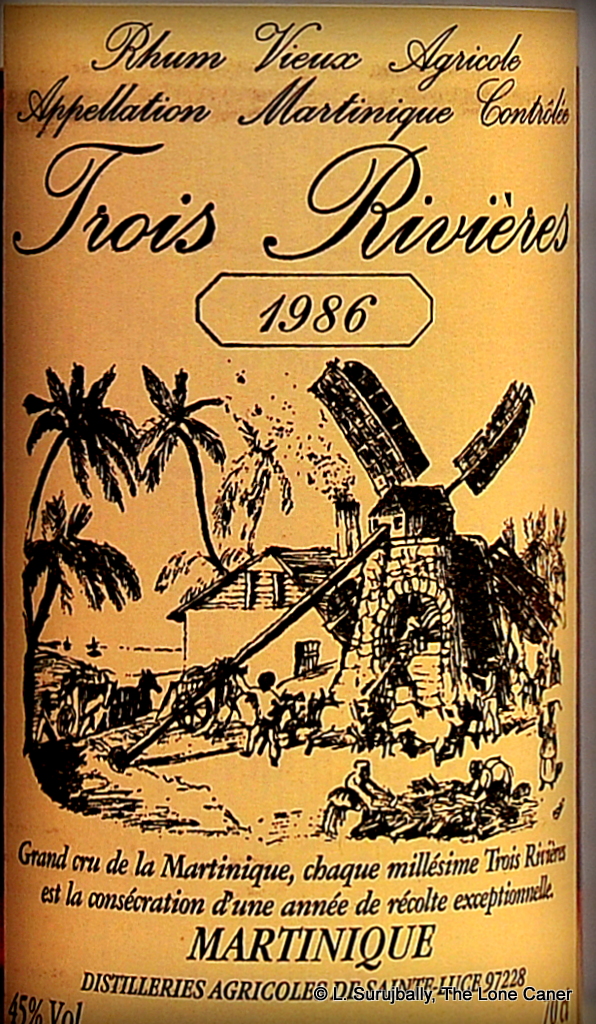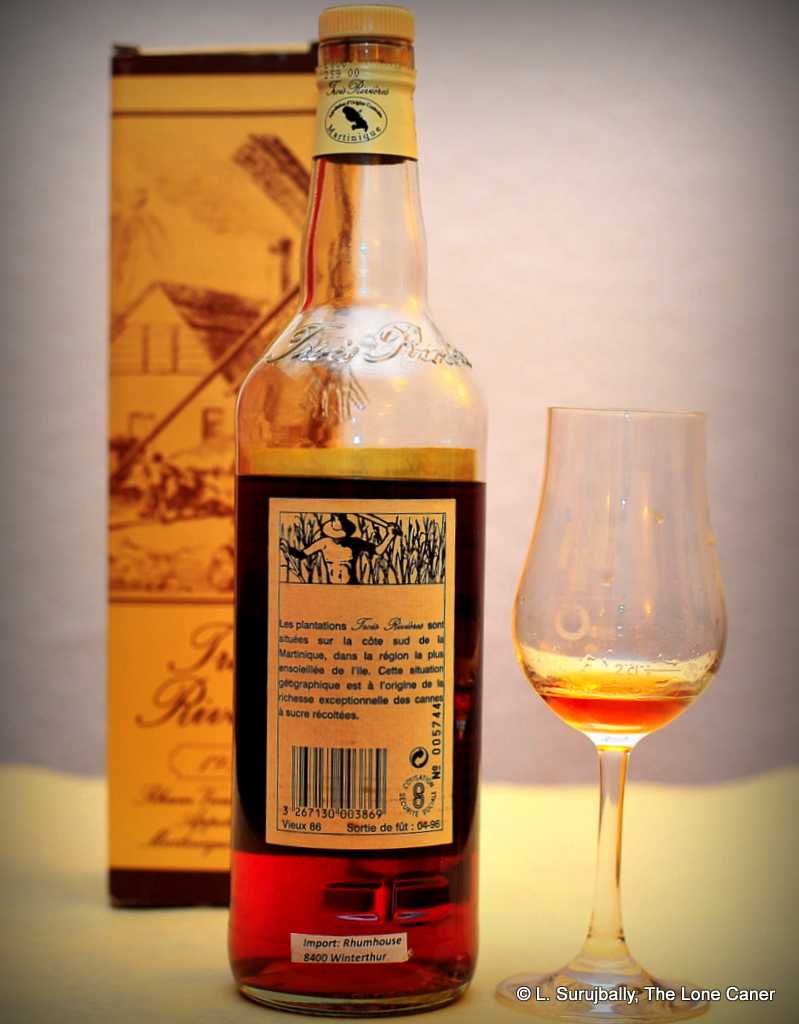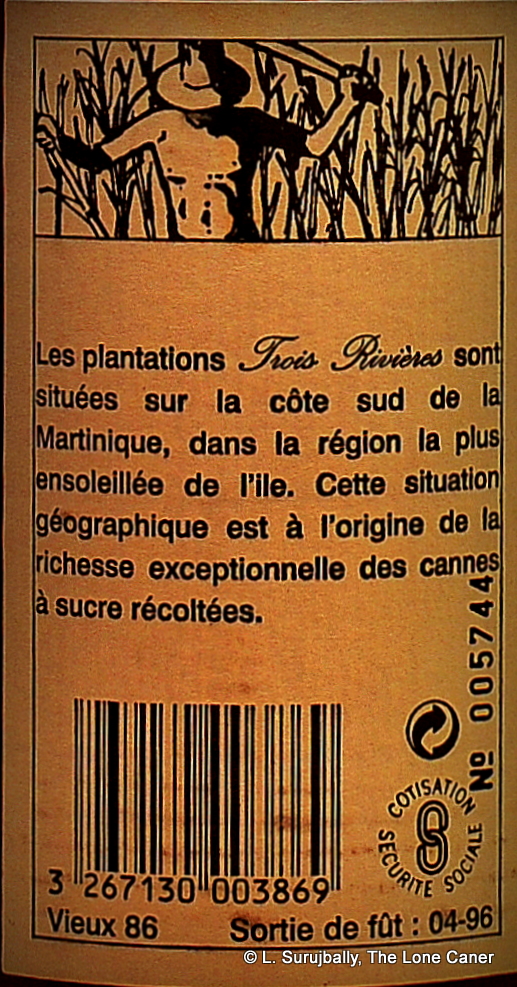Rumaniacs Review 023 | 0423
Supposedly the 1970s and 1980s are the rarest vintages of many Martinique rhums – nearly thirty years later, that’s as little as makes no difference, since any and all rhums from that era are now collector’s items, irrespective of the country. Many have been lost forever and aren’t even remembered. This one from 1986 deserves to be rescued from the pit, however, because it’s pretty good.
Saint James on the north east coast of Martinique has been around since 1765 when Father LeFebure of the Brothers of Charity first devised a cane spirit, which he began shipping to the British colonies up north. Initially he named the rhum Saint Jacques after a gent who actually bought the island in the 1630s (from the Compagnie des Îles d’Amérique) and developed it into a successful French colony – but not one to let sentiment (or his faith, apparently) get in the way of sound commercial bastardization, he renamed it Saint James to sound more English and thereby increase sales.
Colour – Amber
Strength – 43%
Nose – Wow! What a lovely, deep, fruity nose. Is this an AOC agricole? Nope, the island adopted it only in late 1996, so all kinds of weird stuff was going on before then…and thank heavens for that. This nose is lovely – vanillas and oaken tannins, white flowers, sweet peaches in syrup, but held at bay by a crisp driness almost like a Riseling, and ending up with (get this) fanta soda pop and bubble gum. Don’t ask me how, I just smell this thing and call it as I see it – but it’s great.
Palate – On a medium-to-light bodied, deliciously warm mouthfeel, the Fruit Express continues to romp: dark red cherries, apricots, wound about with light and chirpy citrus peel; dates and raisins, lime juice soaked brown sugar…yet somehow the rhum remains light and sprightly, not heavy at all and without any kind of overbearing sweetness. Last tastes with water add white chocolate, some weak coffee grounds and grasses wet in the rain, all very very nice.
Finish – more a summing up of the preceding than anything new, and quite short, perhaps to be expected from 43%. Warm, a little bite, clean and very clear, with more leather and oak, some citrus (a little), and fruits. Only complaint is I wish it was longer.
Thoughts – The AOC is something of a double edged sword to rummies – drinkers and makers both. Many appreciate the standards, others chafe under the restrictions. It’s always interesting to see how different the old ways are from the new, just by comparing any modern aged Saint James with this one rhum from a generation ago. The 1986 may be long out of production, costs upwards of €500 and rare as a negative Velier review, but that doesn’t mean the ways of the old masters were in any way bad ones.
(86/100)



 The question I asked of the 1975 (which I was using as a control alongside the Rhum Rhum Liberation Integrale, the
The question I asked of the 1975 (which I was using as a control alongside the Rhum Rhum Liberation Integrale, the